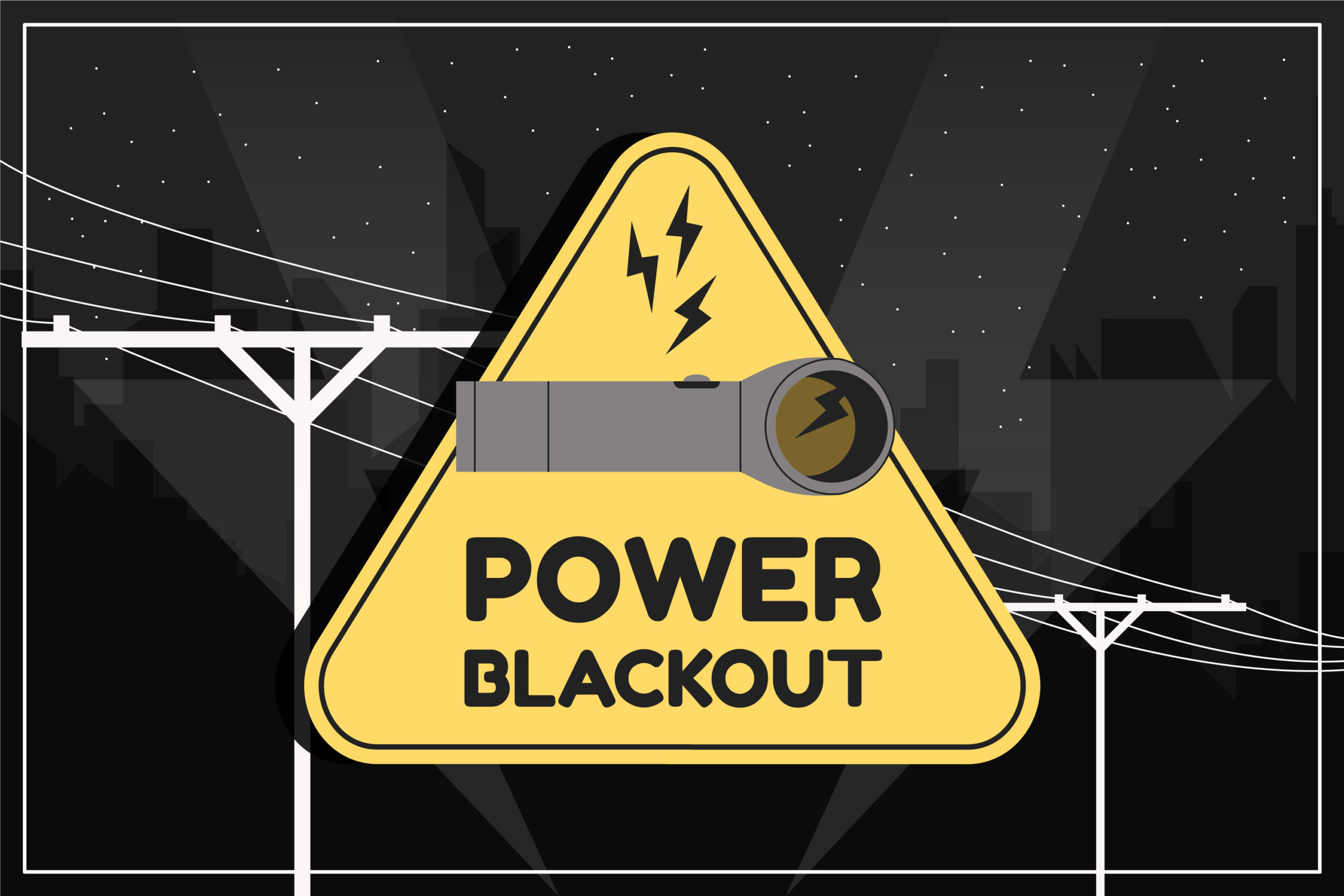Causes, effects & lessons learned
The Iberian Peninsula suffered a massive blackout a couple of weeks ago. Millions of people were left without power, trains and subways stopped running, traffic lights went out, telephone and internet services were disrupted, and numerous daily activities were paralyzed. Since then, multiple actors have been searching for the causes that led to this historic blackout, the effects that came with it and finally a series of lessons learned that arose from this event.
The Spanish President publicly declared that 15 GW of power were abruptly disconnected. This immediately raised a critical question: could such a large-scale disconnection occur within a highly interconnected system like Europe’s without a preceding incident? The answer is “no”, for various reasons of technical nature, related to the way in which these types of systems are operated and controlled. Therefore, the question is: what events, just seconds or minutes prior to the disconnection, could have caused such an outcome?
CAUSES
Several possible hypotheses have been considered, including those put forward by Antonio Gómez Expósito, Professor of Electrical Engineering of the University of Sevilla, which are:
- Human error. The accidental disconnection of a generation plant or transmission line that is critical to guarantee the power flows demanded by consumption at that moment. (This was the case, for example, in the 2007 blackout in Germany when an operator opened a line over the Rhine so that a ship could pass, which caused neighbouring lines to trip and, ultimately, a blackout that extended to Morocco).
- Failure of equipment. Either power or protection, which by action or omission performs poorly (this was the case of the UK blackout in the summer of 2019, the worst in a decade, caused by the incorrect response to the opening of a line by an atmospheric discharge of three different types of power plants (off-shore wind, gas and cogeneration), which disconnected unexpectedly in less than a second).
- Concurrence in time and space of a series of factors that are difficult to foresee, which individually would not cause the collapse of the system but which, taken together, could subject it to extreme conditions, not contemplated in the design of its components, which are disconnected to protect themselves.
The official explanation provided by the government seems to be in line with this third hypothesis, which emphasises that the blackout resulted from a concatenation of more complex failures. Some experts explain that such a concurrence of hard-to-predict factors usually occurs in adverse weather conditions, but in this case, it was not due to weather conditions.
Both the Spanish government and several experts say they are open to all possibilities, and possible events such as sabotage (physical or cybernetic) are not completely ruled out. Even so, there is not enough evidence to support the hypothesis of a cyber-attack.
According to several experts, including Antonio Gómez Expósito, what almost all major blackouts tend to share is that several elements are always involved, whose sequential disconnection leads to an insurmountable imbalance between generation and demand, which causes significant frequency and voltage fluctuations and leads to the eventual tripping of the rest of the equipment, which is automatically disconnected in order to avoid greater damage.
Since the blackout occurred, several actors have taken action to investigate what happened on April 28. Among them is the European Network of Transmission System Operators for Electricity (ENTSO-E), which in its report agrees that the causes of what happened are enormously complex. It has detected two periods of voltage and frequency oscillations in European electricity systems in the half hour prior to the incident.
In any case, it seems that we will still have to wait several months for a detailed and clear report on what happened. The Minister for Ecological Transition, Sara Aaegen, points out that ‘there are references in the developed world, in Germany, Italy, California, in past episodes, even with less population affected, where it has taken on average seven months to have the reports. We want to have them much sooner. As soon as possible’.
EFFECTS:
The consequences of this historic blackout varied greatly depending on each person’s circumstances. Those who were teleworking from home experienced it differently than those who were trapped for hours on a train or elevator. However, the fact that the worst part of the crisis lasted less than 12 hours meant that the effects on the general population were limited.
- Immediate effects. The blackout directly impacted the daily life of almost 50 million people, causing disruptions both in the personal and work life of these persons. Some facts include around 35,000 passengers in Spain were trapped on more than 100 trains and had to be assisted by emergency services; in Portugal 96 flights were cancelled, while in Spain 45 flights were cancelled; and thousands of people were trapped in elevators; moreover, up to 8 deaths in Spain and Portugal were linked to causes connected with the blackout (e.g. the ventilator to which they were dependent to breath stopped due to the blackout).
- Mid-term effects. The massive blackout brought economic activity in Spain and Portugal to an abrupt halt for much of April 28. Closed businesses, paralyzed factories, and evacuated offices were the norm while the power outage lasted. The direct impact on GDP, although significant, is considered temporary. In Spain, the CEOE (Employers’ Association) estimated losses equivalent to 0.1% of GDP (approximately €1.6 billion) on the first day. It also had an impact on the supply chain: paralysed demand and unexpected spikes, disconnection among distributors, production lines stopped, and at every level – from retail to manufacturing – procurement teams faced the same challenge: operating with almost no visibility.
- Long-term effects. This situation has raised many concerns about the possibility of this event happening again and prompted many questions about our deep dependence on energy for many important tasks of daily life. Ultimately, some lessons have been learned.
LESSONS LEARNED
- Although the Spanish electrical system has been classified as one of the most robust on the planet, this event has brought up the need to continue working to make it more resilient.
- The functioning of today’s society relies on highly interdependent systems (energy, transportation, telecommunications, healthcare, supply chain, etc.). This interconnection, while efficient, increases exposure to failures in a single node. Actions should be taken toward infrastructures with absorption capacity, redundant systems and dynamic recovery protocols.
- The Iberian Peninsula is not an isolated system, but it is not as much interconnected as other European countries. There is a need of increasing the interconnection lines with France. Currently, there are only two main interconnections (Baixas-Santa Llogaia & Cubnezais-Gatika (Golfo de Bizcaia), and then several smaller ones (Arkale-Argia, Hernani-Argia, Biescas-Pragnères & Vic-Baixàs). This represents less than 3% of interconnectivity, when the goal fixed by 2020 was that of 10%. This does not only affect Spain, but also Portugal, which makes it a European matter. The European Commission has highlighted that this interconnection must be a priority. Increasing the interconnections will results in: (1) stronger security and stability of electrical supply, (2) deeper integration of European electricity grids; (3) ease of integration of renewable energies into the grid, and (4) improved quality of electricity supply in border areas.
Moreover, the blackout has brought many debates in connection with the energy transition, with the renewables and the nuclear energy. Some experts highlight that, while for over five years the country has been engaged in a frenetic race to install renewables, the regulators have not done their homework in time to ensure that this deployment is accompanied by the corresponding investment effort in storage systems. In this realm Antonio Gómez Expósito points out that there is a lack of a European directive recognising the distinctive character of storage as a new system agent, capable of providing the flexibility necessary for the correct coupling between uncertain generation and inflexible demand.
Also, the Spanish government is aiming to create an Energy National Comission, an independent regulator formed by independent energy experts, capable of accompanying the energy transformation and transition, and to guide it in favour of a competitive sector, which brings advantages from a cost-efficiency point of view but also accompanies this path of decarbonisation.
To sum up, this event has raised many concerns and many hypotheses. However, given its relevance and social and economic implications, it is advisable to exercise caution and prudence, and not to be carried away by hoaxes or self-interested speculation. Once the concrete causes are finally recognised, lessons shall be learned, and improvements shall be made to avoid a repetition of such an event in the future.

